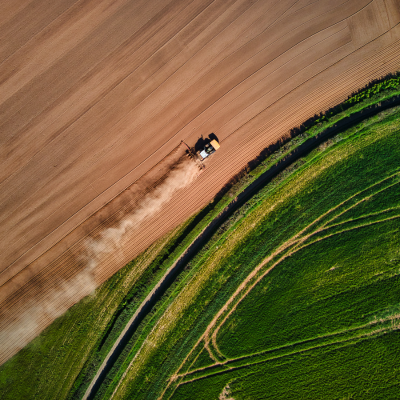
How Big is Too Big? The Never Ending Race to the Top of the Horsepower Charts
Lately, the UK agricultural market has seen a significant rise in the horsepower of tractors. This prolificacy of heavy hitters of the market has sparked a debate on our desk here at MorePeople: how big is too big? With the introduction of the John Deere 9RX 830 pushing out a bonkers 913 max horsepower - enough to make even the most stoic pit viper wearing, mullet sporting Agri-bro weak at the knees - the question has never been more relevant.
When the 9RX 830 landed onto the pages of the Farmers Weekly last month, I’m certain low whistles of appreciation emanated from farm offices and houses all across the UK. Though how many of those, I wonder, were thinking “yes, the 9RX 640 sitting in the shed out there really just isn’t enough”?
Now, don’t get me wrong, I can appreciate ‘big kit’ as much as the next person in the sector. Yet I can’t help but feel the introduction of this behemoth is a bit unnecessary on our little island.
The average power of tractors registered in the UK has been steadily increasing. In 2023, the average power reached 173.9 horsepower, just over 5 horsepower higher than the previous year. The growth is particularly evident in the higher horsepower ranges, with tractors in the 241-320 horsepower category seeing a 29% increase in registrations.
While the 9RX 830 will undoubtedly excel in specific environments, its utility in the UK is somewhat limited. Our agricultural landscape is diverse, with varying soil types and farm/field sizes. High-horsepower tractors are most beneficial in areas with heavy clay soils, where pulling through compacted soil requires significant power, but also in large, open fields where their ability to pull wide implements can be fully utilised. This grunt I can see being ideal for prairie-style farming in the USA, Australia or Eastern Europe, or areas with huge fields draped across undulating landscapes (the hills and hollows of Washington State spring to mind) but that’s got to be it.
For many UK farms, a tractor with such high horsepower surely has to be overkill. Most farms would not require the immense power of the new 9RX. In these environments, a more ‘modest’ tractor, such as the Case Quadtrac with its measly range-topping 715 horsepower, would be more than sufficient. And that’s before you even start to consider getting these machines from farm to field. The big 9RX has a base weight of 33-and-a-half tonnes and a ballasted weight north of 38 tonnes. Add to that the 10-or-so tonnes which would be hooked up to the back of the thing, and some will question whether the driver would need to be licensed, similar to STGO/overweight trucks. Then add into the mix the roads and bridges equipment has to negotiate even in those parts of the UK with the biggest fields and you soon think the odds are stacking up against machinery this big.
I remember being surprised at the range of implements that could be pulled by more modestly powered tractors. At home, our biggest tractor, boasting 200hp, more than adequately manages a 4m seed drill, a 6m disc cultivator or a 6 furrow plough. We, being a mixed operation in Northumberland, obviously aren’t in the target audience of John Deere with their latest range addition, but this experience has made me appreciate the balance between power and practicality. And on some larger operations I’ve worked on, a Quadtrac 620 easily coped with a 12m Kockerling Allrounder and a Vaderstad TopDown 700, unless pulling up a significant hill.
Anyway, on that note, what actually requires 913 horsepower? I’m no expert on the UK implement market but I’m pretty sure the most horsepower intensive implements in the UK are those in the deep tillage category – think Vaderstad TopDown, Kuhn Performer, Sumo Quatro, etc, and after a quick google, the most their respective specs state as a requirement is 700hp. This begs the question – what is the big green crawler going to be used for that other high-HP crawlers wouldn’t be able to handle? I suppose John Deere may be angling toward providing the capability for manufacturers to create even bigger implements, but that’s a lot of chicken-and-egg supposition.
The final nail in the coffin in my mind is the topic of the cash you need to part with to have one of these rumble into your yard. The top-of-the-range 9RX will set you back a pretty terrifying £840k, with no added extras. If we compare this to the top of the range Quadtrac, which chimes in at a smidge under £600k un-spec’d, it’ll surely be tough to justify the extra £240k? (yes, I know almost all will be on H-P agreements/leased, but the argument remains).
And with farming finances being in the parlous state they are at the moment, if Joe public catches wind how much the machinery sat in farmyards is worth, especially with the new JD present, it’ll be hard to continue to convince them to be ‘on our side’.
Anyway, I’ll be in the presence of the new 9RX at Cereals this year – perhaps I’ll be won over when I see one in person. Those who aren’t going, maybe you’ll have to wait until a Yorkshire hill farmer gets one for his ‘awld Marshall side discharge spreader in a few years time.
Drop me a message if you are attending Cereals this year, it would be great to meet and/ or catch up!
